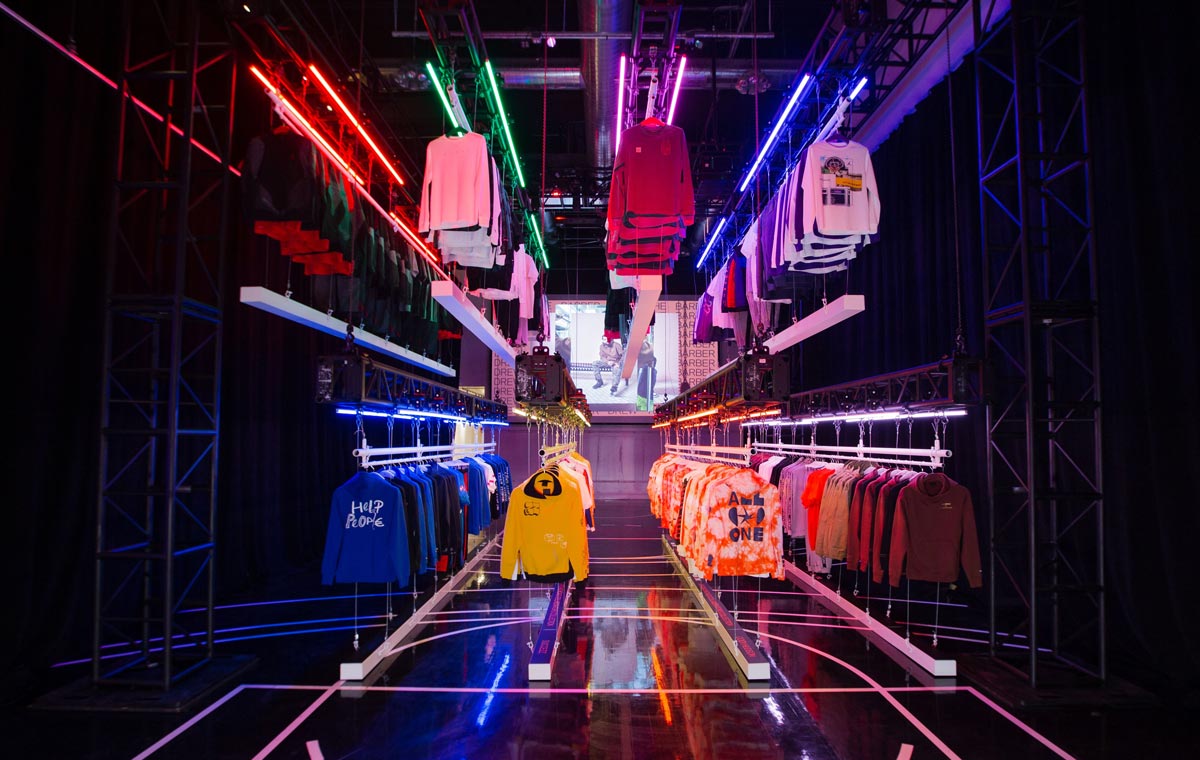The world of retail is in a state of constant change. Consumers adopt new ways of shopping and vow that they’ll never go back. Meanwhile, what’s old sometimes becomes new again, but in ways that aren’t quite the same as before. Take the store within a store (SWAS) concept, for example. The store within a store or “pop-ins'' retail model is a perennial favorite because of its effectiveness at generating revenue and reducing costs.
The store within a store model enables brands to draft off each other's flow, sharing guests and location costs while reaching new audiences and increasing sales. In this article, we’ll explain exactly what a store within a store is and how top brands are using this symbiotic retail model to thrive in the new world economy.
What is a Store within a Store?
A store within a store is similar to a pop-up activation except with more permanence. To build a store within a store, one company or retailer will create a branded retail environment inside the walls of another retailer. Familiar examples of the SWAS concept include the branded counters and designer boutiques inside traditional department stores. Hardware, electronics and equipment supply stores use the SWAS model to maximize their use of space as well.
A store within a store isn’t just a designated area where a specific brand’s goods are placed within another retailer’s shop, though. These in-residence brand activations include some or all of the features that make a store a store. For example, many SWAS locations have distinctive branding which may include their own stylized retail fixtures, signage and color scheme, independent sales teams, and separate point-of-sale systems. Of course, how independent each store will be and whether they can share checkout, return and other services is always subject to negotiation.
What most distinguishes a SWAS from a regular department within a store is ownership. A retailer might decide to build and operate their own cafe, hairdresser’s shop, optometrist’s office, or auto repair garage. If another brand provides those goods or services from a dedicated space within the retailer’s footprint, it’s a store within a store.

Why are more brands choosing the store within a store model?
The store within a store concept, known as “concession retailing'' in Europe, enables tenant brands to reach new audiences and enter markets that might otherwise be out of reach. For example, a cosmetics or fashion brand that can’t justify opening a full-sized store in a specific region can still serve that market with a branded presence inside a local department store instead.
Online direct-to-consumer and other brands that don’t operate retail stores can use a SWAS to gain a physical footprint or test the market before deciding to invest in a brick-and-mortar build-out. New brands can introduce themselves to an existing retailer’s customer base and gain an awareness boost from that retailer’s tacit endorsement.
The host retailer benefits, too. An established brand in need of a refresh can introduce new products and services to its customers cost-free. Customers of the tenant brand may discover the retailer for the first time and with new items and offerings to explore, foot traffic increases and customers stay in-store longer.
Of course, it’s also a plus to transform low-producing, revenue-draining space into a revenue generator.
Choosing a SWAS can reduce both brands' carbon footprint, too. Malls consume green space to provide parking and through streets. Inside, common spaces are often cavernous and costly to light, heat, and cool. Customers who need a variety of products or services must travel between various locations to find what they want.
How can your brand use a store within a store to increase revenue and expand your audience?
Combining retail destinations and drawing traffic by making a new spot to shop in an old locale isn’t a novel idea. Consider department stores, malls, mega-stores, mini-malls, kiosks, boutiques, pop-ups and open street bazaars–retailers, real estate owners, and shoppers have always found inventive ways to combine shopping destinations.
Today’s brands must be even more inventive than their predecessors in developing enticing and engaging combinations to bring customers to their doors. Modern shoppers can get nearly anything they desire delivered to their doorstep and they place a high premium on convenience.
To get customers out of the house brands must offer an experience worth the effort. That experience may be maximizing convenience, giving visitors a treat to look forward to, offering them a chance to see and touch the latest products, or speak one-on-one with an expert about the products or services they’re considering.
Develop SWAS synergies around what Chain Store Age calls the SUCCEED set of principles:
- Specialized
- Unanticipated
- Convenient
- Category
- Experience
- Expected
- Discovery
This list covers a lot of territory but the idea behind it is to do something purposeful. Clearly define the want or need your store within a store will meet before you build.
For example, Best Buy hosts individual brands and even online competitors in its physical stores. This allows the brand to dominate the electronics and appliance categories. A shopper who wants to view multiple products and consult with experts before making a decision knows they can achieve those goals at their local Best Buy. By embracing “showrooming” Best Buy keeps its foot traffic high.
Multi-department retailers such as Target and Wal-Mart began their store-within-a-store journey by adding goods or services that met their customers’ need for convenience. Visitors to these single-store, mega-destinations can now get their household supplies, furniture, electronics, groceries, eyeglasses, prescription refills and grab a quick snack. Now, the large retailers continue to surprise and delight by adding featured designers, electronics brands, beauty pop-ins and other products and services for customers to discover.
Not to be outdone, grocer Hy-Vee’s latest stores include everything from fitness equipment showrooms to a DSW shoe store inside.
Fitness equipment is a popular try-before-you-buy product that makes it a perfect match for the store within a store concept and every retailer seems to have their favorite. Nordstrom has partnered with Tonal to bring fitness equipment to its department stores.
Maximize your brand’s reach and revenue with a well-planned store within a store design
When choosing a brand for your match-up, look for partners that can introduce your products to members of your target audience or new buyer personas you want to explore. Then, develop a design and floor plan that allows your brand and theirs to stand out while complementing one another.
To learn how a full-service design and fabrication company can build your store within a store and ensure a smooth start to your new retail relationship, schedule a no-obligation strategy session with Bridgewater Studio today. A comprehensive design, fabrication, and production studio, our expert team provides end-to-end services for our clients, from inception to installation.


.png)
.png)
.png)







